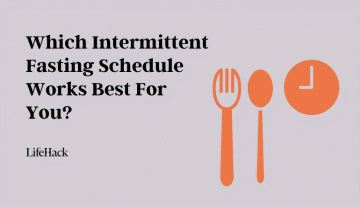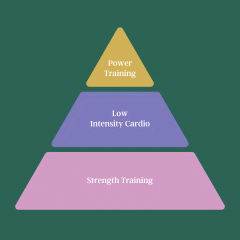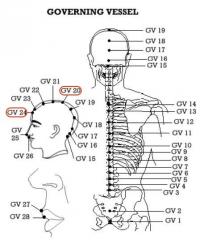Despite our best intentions and efforts, making mistakes is a fact of life. Humans are prone to error, so we are inevitably going to mess up at one point or another, which is why it’s so important to learn how to apologize.
Many of the slip ups we make won’t have any impact on those around us, but what about the times when they do hurt someone else, either inadvertently or purposefully? Do we ignore the mistake and hope it will go away on its own? Do we confront the mistake, however painful that may be, and apologize? How we react to our mistakes defines both who we are and how we are perceived by others.
I’m a voice and presence coach specializing in training people to find their voice and speak their truth. One of the most difficult tasks I teach my students is how to apologize authentically. It takes a lot of vulnerability to admit wrongdoing, and even more so to seek forgiveness and make amends. (After all, we live in a world where some of our top leaders openly avoid taking accountability for their mistakes.) However, like anything else in life, if you ignore something painful instead of facing it, that pain tends to grow and appear in other parts of your life.
So how do you apologize effectively? Technically, there is no one “right” way, but there are plenty of ineffective ways to go about apologizing. I’m going to approach this from the perspective that we are genuinely remorseful and wish to make amends for the hurt we have caused.
Simply saying the words “I’m sorry” is easy, but it’s important to match the intention behind your words. Apologizing authentically when you have made a mistake—uttering remorse that is grounded in your truth—is more complex, and that’s what we’re going to cover here.
In order to make a genuine apology where your words are backed up by your truth and your genuine emotion, I refer to a practice introduced to me by a friend several years ago: the Hawaiian Ho’oponopono prayer. Now, I’m not an expert in the history of this prayer, but having meditated with it for a number of years, I’ve found that this practice of reconciliation and forgiveness is incredibly powerful.
Ho’oponopono means “to make right” or “rectify an error.” What sets this prayer apart is the focus not on controlling a particular outcome (i.e. healing the hurt relationship you have with this person), but instead the focus is on healing yourself in order to heal the situation.
It’s profoundly simple, and translates as follows:
I’m sorry.
Please forgive me.
Thank you.
I love you.
Everything we need to apologize is right here in this prayer. Let’s break down the structure of this apology into these 4 concrete steps for before, during, and after the apology.
Before the Apology
Step 1: I’m Sorry
What are you sorry for?
Before you start speaking and leading from pure emotion, it’s important to actually figure out what you are sorry for:
Start by Writing Down the Facts
When you’re writing this out, avoid assigning any judgments to the scenario or making any assumptions about the person affected by your mistake; really stick to straight facts. Dump the whole situation onto the page, not leaving out any little details.
Ex. You were struggling with an issue. I responded very bluntly in my feedback, and I saw tears form in your eyes.
Ex. You came to me with an issue. I was answering an email on my phone, and I didn’t respond much because I was distracted. I looked up and saw tears in your eyes. You walked away.
Write Down Your Part in Making This Mistake
Stick to your contribution to the mistake only. Avoid writing about anyone else, even if they were a factor in you making the mistake. Simply focus on what you did that you know helped create the situation.
Ex. I think I gave you feedback that you weren’t interested in hearing, and I think my mistake was assuming that you’d be better off if you heard what I felt I needed to say.
Ex. I wasn’t fully present to listen to you when you were in distress. I think my mistake was continuing to work on my phone when you were talking, instead of saying I needed a moment to finish what I was doing first, or just putting down my phone so that I could listen.
Ask Yourself How You’re Feeling by Grounding Yourself in Your Truth
I teach a process to my clients called the Voice Body Connection process, which starts with grounding yourself in your physical sensations. This process will help you find your voice and speak your truth objectively, even if you are flooded with strong emotions in the moment.
Identify the Physical Sensations You Feel
Now that you have relived the experience of making the mistake by writing it out, tune into your body, and ask yourself the question:
“What is the strongest sensation I feel in my body right now?”
Be sure to keep this body-based. When you are preparing to apologize, taking note of your sensations helps you ground yourself in how you are feeling so that you can show up.
Identify Why You Think You Are Feeling These Sensations
Now that you have identified your primary sensations, ask yourself the following question:
“What do I think is the stimulus that led me to feel this sensation?”
This is likely a very simple statement that you already wrote about. It’s the heart of the matter.
Ex. I spoke inappropriately to my friend.
Ex. I ignored my friend when they were in distress.
Identify Your Emotions
Now that you know why you are feeling these physical sensations, move to identify your emotions. Ask yourself:
“What are my emotions about noticing all of this?”
Some primary emotions are fear, anger, sadness, disgust, joy, and arousal.
Ex. I’m feeling sad that I crossed my friend’s boundaries.
Ex. I’m feeling sad and frustrated that I hurt my friend’s feelings.
Identify Your Ideal Outcome
Your emotions are tied to your desire for a future outcome. Ask yourself,
“Do I have any desires related to everything I just noticed?”
Examples of core desires are safety, comfort, bonding/love, and curiosity/growth.
Ex. I want to apologize so that we can be close again and improve our relationship.
Make Sure You Actually Want Reconnection
If you don’t feel safe with that person, there’s no reason to apologize and reconnect. However, if you feel safe and comfortable with them and desire to be connected again, then you can proceed to the next step of the Ho’oponopono prayer.
During the Apology
Step 2: Please Forgive Me
You’re not going to share everything from your process above with your friend. What you are going to share is your acknowledgment of the hurt you caused, your part in creating that situation, and your desire to reconnect.
It’s also very important to be clear about only speaking your truth and not commenting on their side. That’s their job. You can use this script by filling in the observations you noted above:
I think <a simple statement about what happened> happened between us…
And I think my mistake was <insert your part here>…
And I was left feeling <insert your emotions>…
and moving forward, I would want is to <insert your desires>.
Ex. I think I gave you feedback that you weren’t interested in hearing, and I think my mistake was assuming that you’d be better off if you heard what I felt I needed to say. And I am left feeling sad that I crossed your boundaries. Moving forward what I really want is to apologize, be close to you again, and assure you that I will ask permission in the future before giving feedback.
Ex. I wasn’t fully present to listen to you when you were in distress. I think my mistake was continuing to work on my phone when you were talking, instead of saying I needed a moment to finish what I was doing first, or just putting down my phone so that I could listen. And I am left feeling sad that I hurt your feelings. Moving forward what I really want is to apologize, be close to you again, and assure you that I will be more present in the future, or tell you that I need a moment to finish what I am doing so that I can be present.
Once you’ve shared that, stop talking about yourself. That’s all you needed to say to get the conversation started. Start listening and be curious. Ask open-ended questions about their experience like “How did that feel for you?” When you do speak, let them know that you hear what they are saying, and you acknowledge your impact.
Step 3: Thank You
After you’ve expressed yourself, leave space to see the impact you’ve had on the person. Understand that the reaction may not be what you are expecting or hoping for. The act of apologizing is about centering the other person’s experience, not about putting the focus on yourself.
Now that you have asked the other person about their experience, it is quite possible that they will say things you don’t want to hear. You may find yourself feeling defensive or even angry.
A stressful situation like this can also trigger “Fight or Flight” mode in your body: you may notice that you start sweating, that your pupils are narrowing, that your eyes tear up, or that you start experiencing tunnel vision. This is all normal.
To help stave this off, get genuinely curious about what their experience has been. Don’t listen to be “right.” Listen to be connected and to understand.
Thank them for everything they’ve said, and for being in your life.
Even if they say something you don’t like hearing, thank them anyway for sharing the truth of their experience. This isn’t an easy thing to do, but it is a necessary step towards your own healing in the Ho’oponopono prayer.
Moving Forward After the Apology
Step 4: I Love You
Let’s say you’re actually at a place where the relationship you have with the other person can be repaired. “I love you” encourages curiosity: how can you repair and reconnect? How can things look different moving forward?
Think of something you can do to reconnect with each other, to express and experience your love, appreciation, or respect for each other. Make a plan for how to move forward.
Continuing the practice from Step 3, make a list of things you are grateful for about the other person. We don’t often stop to share how much we appreciate each other, and it feels as good to share appreciation and gratitude as it is to receive it.
This last portion of the prayer is not just for the sake of the other person your mistake affected. It’s for you as well, to ensure you are healing and able to move on from the mistake. It’s easy for many of us to beat ourselves up and continue to hold onto guilt, or even shame, about a mistake we have made, even though we are genuinely remorseful and have tried to make amends.
Continue to repeat the entire Ho’oponopono prayer to yourself after the encounter:
I’m sorry.
Please forgive me.
Thank you.
I love you.
Maybe you will find yourself apologizing to yourself for hurting yourself inadvertently, too.
The Bottom Line
When we speak our truth as an apology, we show up fully in our truth without expecting anything of the other person or trying to encourage them to behave in a certain way. While we cannot affect or control the outcome of the apology, no matter how repentant we are, following the Ho’oponopono can guide us to true repair and healing.
If you have been stuck on finding the “right” way to reconnect and apologize to someone in your life, I hope you will find yourself inspired to take that first step to make things right.
More on How to Apologize
Featured photo credit: Gus Moretta via unsplash.com





























































